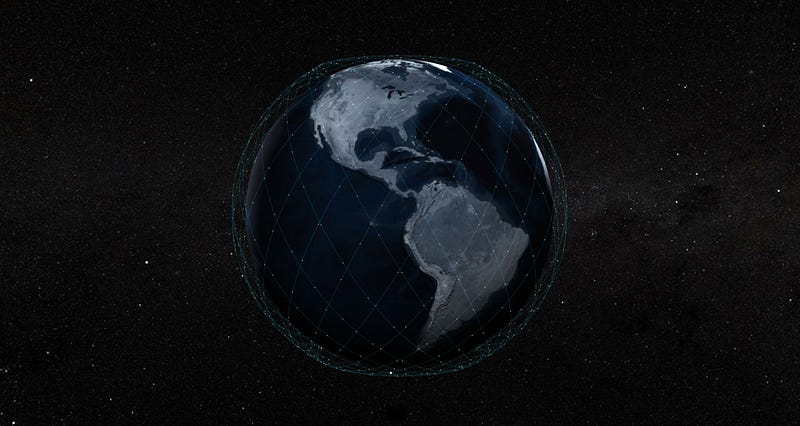The Implications of Elon Musk's Internet on Astronomy
Written on
Chapter 1: The Brightening of Our World
Imagine standing outside, trying to observe something far away. You might be on your porch in Alaska, attempting to catch a glimpse of Russia for any unusual activity. Suddenly, a bright object zips past your face, like a ping-pong ball, disrupting your focus.
No matter how hard you try to refocus on the distant object—a possible submarine or just a fishing boat—another distraction appears. This constant interference ultimately forces you to abandon your mission to monitor potential threats.
Now, envision this scenario while using a telescope to study a distant star. Each time a bright object crosses the telescope's lens, your observations are compromised, making it nearly impossible to gather accurate data.
This is the challenge posed by Starlink, Elon Musk's ambitious project aimed at providing internet access to every corner of the globe.

Starlink's Vision: Global Internet Access
Elon Musk's SpaceX is working on an extensive satellite broadband network that aims to blanket the Earth with nearly 12,000 satellites. This initiative promises high-speed internet with remarkable low latency, comparable to the fastest connections available today.
Users could enjoy seamless internet access from virtually anywhere, whether in urban centers or remote wilderness, as long as they have a clear line of sight to the sky. While specific pricing details remain undisclosed, the company claims its services will be affordable, targeting the nearly half of the world that still lacks reliable internet access.
However, this revolutionary service comes with significant risks.
Light Pollution: A Growing Concern
With technological advancement comes disruption, often with unintended consequences. The introduction of ride-sharing services reshaped the taxi industry, while the rise of electric vehicles challenged traditional oil demand. Similarly, the proliferation of palm oil has led to severe deforestation.
In the case of Starlink, deploying thousands of satellites creates an abundance of new objects in orbit, which have two major repercussions for astronomers: they obstruct views of celestial bodies and reflect significant amounts of light back to Earth.
When observing distant stars, astronomers rely on steady exposures to capture faint light. Any interruption, like a satellite crossing the path, can ruin these critical observations.

Additionally, urban light pollution already complicates astronomical observations. The ambient light from cities drowns out the visibility of faint stars, forcing observatories to be located in remote, dark areas. With Starlink's low-orbit satellites reflecting even more light, finding suitable dark observation sites could become increasingly difficult.
Starlink’s Response to Light Pollution
Recognizing the challenges their satellites create for astronomy, Starlink has initiated efforts to mitigate these effects. One approach involved launching the DarkSat, a satellite designed with special paint to reduce light reflection by 55%. While this is a positive step, it remains visible in the night sky.
Another potential solution could involve adding a reflective shield to deflect sunlight away from the satellites, though this concept remains untested.
The dilemma doesn't stop at Starlink. If other companies like Amazon or Virgin Galactic join the race to establish their satellite networks, the cumulative effect could severely hinder astronomical research.

We may soon face a choice: prioritize advancements in astronomy and asteroid detection, or embrace the convenience of global satellite internet.
While Starlink's vision for universal internet access can foster global connectivity, we must weigh the trade-offs involved. The emergence of new technologies often leads to the decline of established practices, and in this case, it could jeopardize our ability to study the cosmos.
Chapter 2: The Future of Astronomy
The first video titled "Starlink Could Be The End Of Astronomy!" discusses the potential impacts of Starlink's satellite network on astronomical research and observations.
The second video, "How Elon Musk's Starlink Is Bringing In Billions For SpaceX," explores the financial implications and potential success of the Starlink project.